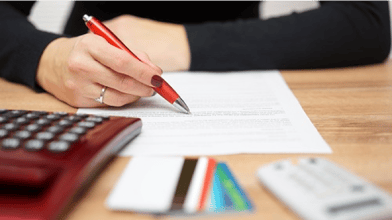Common Fraud Scenarios for Small Businesses to Avoid
According to the 2020 Global Study on Occupational Fraud and Abuse, businesses lose about five percent of their annual revenue to fraud. And while...
Our branches will be closed on 1/19/26 in observance of Martin Luther King Jr. Day. We will re-open with normal business hours on 1/20/26. Thank you!
First Federal Bank will never call, text, or email you to ask for your online banking username, password, or security codes. If you receive a call from someone requesting this information, do not provide it. Call 877-499-0572 for assistance.
Manage your everyday finances with convenient accounts, flexible cards, and personalized service designed to fit your life.
At First Federal Bank, we offer flexible mortgage solutions for almost any situation, helping you secure the right financing for your dream home.
Business banking offers secure financial management, streamlined transactions, credit options, and tools to help businesses grow efficiently and sustainably.
2 min read
First Federal Bank : May 21, 2021 10:00:00 AM EDT

 The things you buy, including equipment and property, to help improve your small business are not only smart investments, they are valid deductions you can report on your tax return. Since you are dealing with taxes, though, how to calculate the depreciation of your business assets can be complicated.
The things you buy, including equipment and property, to help improve your small business are not only smart investments, they are valid deductions you can report on your tax return. Since you are dealing with taxes, though, how to calculate the depreciation of your business assets can be complicated.
“Depreciation is defined as the value of a business asset over its useful life. The way in which depreciation is calculated determines how much of a depreciation deduction you can take in any one year, so it is important to understand the methods of calculating depreciation,” according to The Balance writer Jean Murray.
Categorize your items
Before you start calculating the depreciation of your business assets, you need to categorize the items.
There are three common intervals for separating property depreciation: three-, five-, and seven years. According to H&R Block certain livestock, over-the road tractor units, and manufacturing tools fall under the three-year mark. Five-year property includes vehicles, construction assets, office equipment, and computers. The final tier, seven year, focuses on miscellaneous property that does not fit the three- or five-year structures, furniture for your office, and appliances.
“You can also depreciate real property if you use it in a trade or business or it creates income for you,” H&R Block reports. “For residential rental property, the depreciable life is 27.5 years. For commercial rental real estate and buildings used in a trade or business, the depreciable life is 39 years.”
Unfortunately, there are items or property you cannot depreciate. These include property, such as office supplies that will be depleted within one year, the equipment needed to make a capital improvement, and, “certain intangible assets,” says Murray. This refers to term interests and software.
Choose a depreciation method
Once you have your business assets properly categorized, you can choose a depreciation method that works for you. You have several to choose from: straight line depreciation, double declining balance, and usage-based depreciation. No matter which method you choose, though, Murray says you will need to know the total cost or adjusted basis of the item, the applicable salvage value, and the useful life of the asset.
“The straight-line method determines the estimated salvage value (scrap value) of an asset at the end of its life and then subtracts that value from its original cost,” according to Investopedia.
The double declining balance method kicks the depreciation rate up a notch so the amount is higher and quicker at the start of its useful life, says Murray.
The usage-based deprecation method looks at the overall output of an asset, if the asset’s output is not consistent year to year. A machine that makes car parts is a good example for this depreciation method, notes Murray.
Seek assistance
Calculating your business asset depreciation can be confusing, and involve painstaking paperwork. Even if you have a clear understanding of the process, get a second opinion from a tax professional, Murray suggests. The combination of good records of your business assets and the input of a tax professional can help alleviate some of the stress of preparing your return.

According to the 2020 Global Study on Occupational Fraud and Abuse, businesses lose about five percent of their annual revenue to fraud. And while...

Tax season is never a fun time of the year, but it’s important not to treat doing your taxes as yet another item to quickly cross off your to-do...

Obtaining the proper insurance coverage is one of the most important steps you can take to ensure the success of your small business. No matter what...
Manage your accounts, make payments, and more.
Open an account with us.